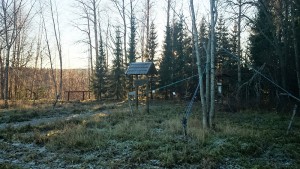 When arriving at the north western entrance the first thing you will encounter is two large ash trees (Fraxinus excelsior) on either side of the path. These trees were moved along with almost 100 other trees from a site closer to the city centre in 2011.
When arriving at the north western entrance the first thing you will encounter is two large ash trees (Fraxinus excelsior) on either side of the path. These trees were moved along with almost 100 other trees from a site closer to the city centre in 2011.
The row of conifers in the background is a group of Serbian spruces (Picea omorika). This species natural habitat is confined to a small number of isolated populations in the mountainous border regions between Bosnia-Herzegovina and Serbia. Furthest to the right in the picture is a native species, norway spruce (Picea abies) which covers a much larger area within its distribution. It covers the whole north-eastern part of Europe and continues east throughout Russia to the .
The situation was actually reversed once and there are fossil finds from north middle Sweden that shows Serbian spruce present here before the latest ice age while norway spruce is absent. When the the climate gradually got colder 125 000 years ago all the tree species, including the Serbian spruces were forced to emigrate further south. Closer to the mediterranean sea they found refuge during the cold, in this case in the Balkans. The climate in our present interglacial interval were probably too hot and dry for the Serbian spruces to compete with the Norway spruces which then took over the habitat.
Every ice age that has occured on these northern latitudes have been a tremendous strain on the tree species which have lived here with loss of distribution area and in worst cases extinction as a result. Without these fluctutations in the climate, Europe would have had a much richer treeflora than what we can see today.
